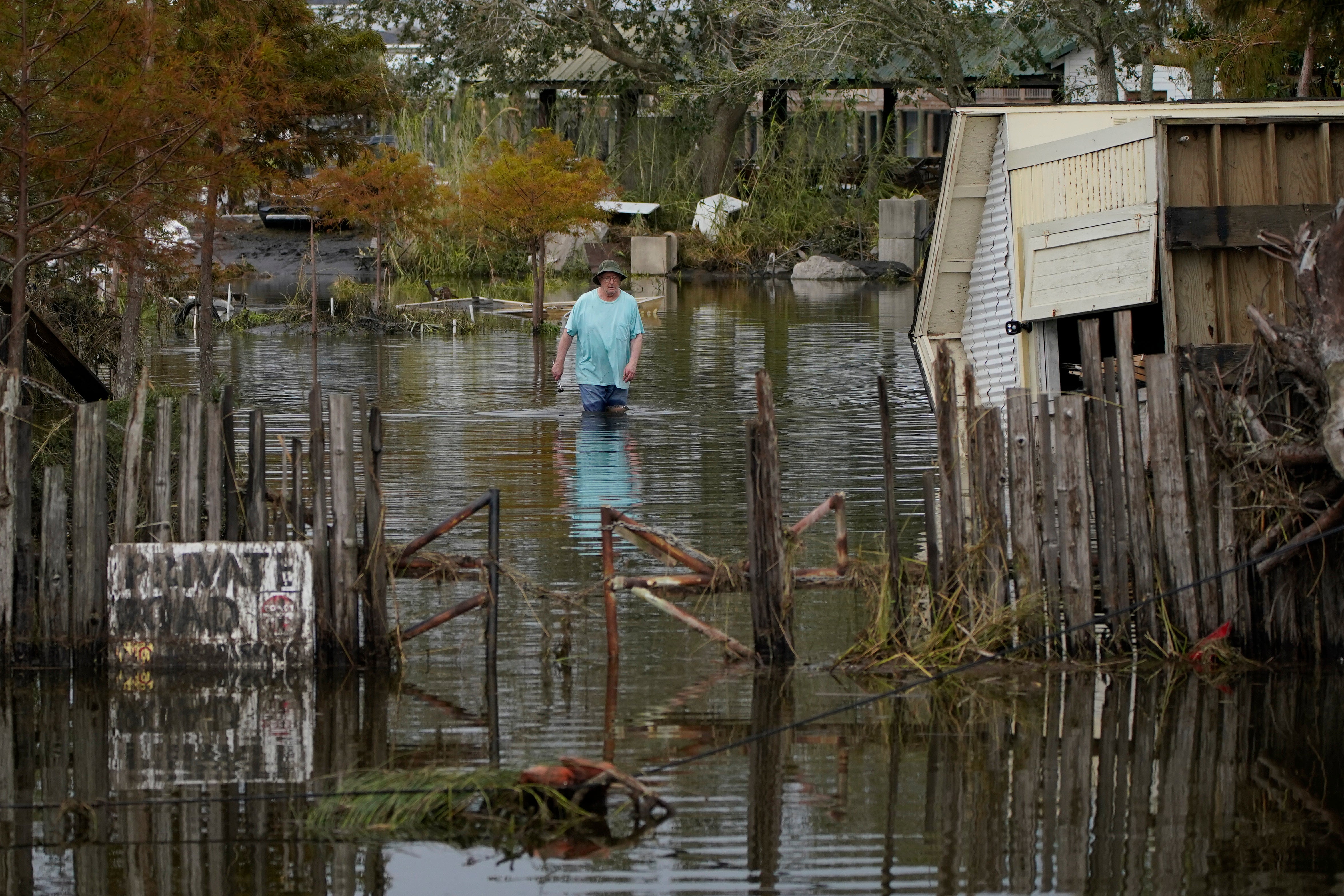Hurricane Ida's aftermath, recovery uneven across Louisiana
Four days after Hurricane Ida struck, the storm's aftermath and progress in recovering from it are being felt unevenly across Louisiana

Your support helps us to tell the story
From reproductive rights to climate change to Big Tech, The Independent is on the ground when the story is developing. Whether it's investigating the financials of Elon Musk's pro-Trump PAC or producing our latest documentary, 'The A Word', which shines a light on the American women fighting for reproductive rights, we know how important it is to parse out the facts from the messaging.
At such a critical moment in US history, we need reporters on the ground. Your donation allows us to keep sending journalists to speak to both sides of the story.
The Independent is trusted by Americans across the entire political spectrum. And unlike many other quality news outlets, we choose not to lock Americans out of our reporting and analysis with paywalls. We believe quality journalism should be available to everyone, paid for by those who can afford it.
Your support makes all the difference.In New Orleans an ongoing power outage after Hurricane Ida is making the sweltering summer unbearable. But in some areas outside the city, that misery is compounded by a lack of water, flooded neighborhoods and severely damaged homes.
Four days after Hurricane Ida struck, the storm's aftermath — and progress in recovering from it — are being felt unevenly across affected communities in Louisiana
In New Orleans, power was restored Wednesday to a small number of homes and businesses, city crews had some streets almost completely cleared of fallen trees and debris and a few corner stores reopened. A revamped levee system protected the city from catastrophic flooding after Ida struck on Sunday with 150 mph (230 kph) winds that tied it for the fifth-strongest hurricane to ever hit the mainland U.S.
Outside New Orleans, neighborhoods remained flooded and residents were still reeling from damage to their homes and property. More than 1,200 people were walking through some of Ida’s hardest-hit communities to look for those needing help, according to the Louisiana Fire Marshal’s office. President Joe Biden was scheduled to visit Louisiana on Friday to survey the damage, the White House said.
Gayle Lawrence lost two cars, refrigerators and almost everything in her garage to floodwaters in southern Louisiana’s Plaquemines Parish. The garage was filled with marsh grass and dead fish. Scores of other homes in the neighborhood were also flooded.
“The house is solid. It didn’t even move. But when the water came up, it destroyed everything,” she said.
In Jefferson Parish, authorities on Wednesday were still waiting for floodwaters to recede enough for trucks carrying food, water and repair supplies to begin moving into Lafitte and other low-lying communities. The parish neighbors New Orleans and saw widespread destruction from Ida.
Parish President Cynthia Lee Sheng said a gas shortage was hampering hospital staff, food bank employees and other critical workers.
“Today, we’re a broken community,” Sheng told a news conference. "It won’t always be that way.”
Emergency officials in nearby Terrebonne Parish took to Twitter to caution evacuees considering returning home that “there are no shelters, no electricity, very limited resources for food, gasoline and supplies and absolutely no medical services.”
Louisiana Gov. John Bel Edwards said he was pleased that power had returned for some people, saying it was “critically important to show progress” after the storm. But he also acknowledged that much more work lay ahead. Roughly 2,600 people remained in shelters, he said.
“I’m very mindful that it’s a start, and only a start,” he told a news conference.
The death toll rose to at least six after a coroner confirmed a 65-year-old woman had drowned in her Louisiana home and police in Maryland said a 19-year-old man was found dead in an apartment complex flooded by heavy rain from Ida’s remnants. And the staggering scope of the disaster began to come into focus, with a private firm estimating that total damage from Ida could exceed $50 billion, making it among the costliest U.S. hurricanes.
Power was restored Wednesday to about 11,500 homes and businesses in eastern New Orleans, according to the electric company Entergy. The company also said it restored power to Ochsner’s main hospital campus in Jefferson Parish and several hospitals near Baton Rouge.
But about 989,000 homes and businesses — 44% of all state utility customers in southeast Louisiana, from the New Orleans area to Baton Rouge — were without power, according to the state Public Service Commission. More than 600,000 people were without water.
In neighboring Mississippi, more than 30,000 customers had no electricity.
Hard-hit areas in southeast Louisiana were under a heat advisory Thursday, with forecasters warning combined heat and humidity could make some areas feel like 106 degrees Fahrenheit (41 degrees Celsius).
New Orleans officials opened seven places where people could get a meal and sit in air conditioning. The city was also using 70 transit buses as cooling sites, Mayor LaToya Cantrell said.
Karen Evans charged electronic devices at a New Orleans gym where four tall fans stirred the air. Her home in the city was not damaged, but she was struggling without power.
“The great challenge is living a life in a sweltering place without air conditioning,” she said.
____
Deslatte reported from Baton Rouge, Louisiana. Associated Press writers Kevin McGill in New Orleans; Stacey Plaisance in Lafitte, Louisiana; Jeff Martin in Marietta, Georgia; Emily Wagster Pettus in Jackson, Mississippi; Seth Borenstein in Kensington, Maryland; Sudhin Thanawala in Atlanta; and Russ Bynum in Savannah, Georgia, contributed to this report.